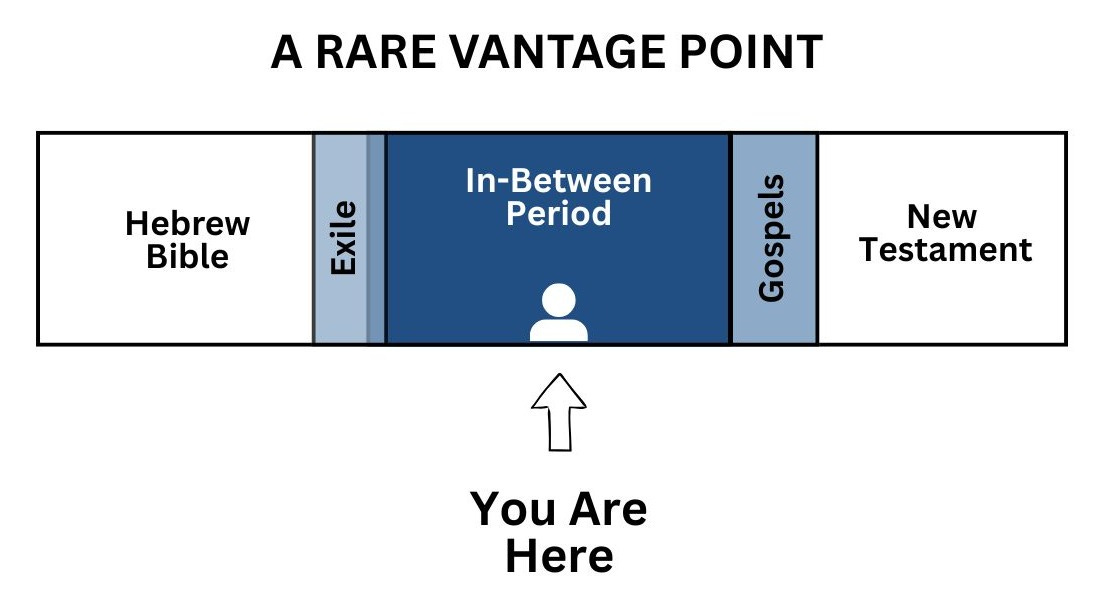Jesus Before Paul or Theology
What do you get with a human Bible and a human Jesus?
Welcome to Tuesdays with Doctor G. where I am continuing a series entitled The Soulcial Revolution—a philosophy of life for the modern world. The Soulcial Revolution is the integration of a complex universe in five areas of life: self, spirituality, people, earth, and the cosmos. Up next is the integration of a complex spirituality.
What do you get with a human Bible and a human Jesus?
Introduction
I’ll get right to the point.
This is how we define a complex spirituality within the Soulcial Revolution.
First, we treat the Bible as ancient wisdom literature and not as sacred text. Secondly, our primary interest is on the synoptic gospels (Matthew, Mark, and Luke). They give us a similar portrait of the carpenter from Nazareth.
John, I love you, but you turned a human Jesus into a cosmic one!
So, with those requirements, what do you get with a human Bible and a human Jesus?
The Brilliance of the Storytellers and Richness of the Story
First, you get brilliant storytellers—the Shakespeares of their day. They took disparate sources and wove them into one of the most compelling figures of ancient history. I don’t think we give them enough credit for their work. The portrait of Jesus that everyone loves is their portrait. The voice against injustice that we hear in the “words of Jesus,” is their voice.
They are the original social justice writers.
Secondly, you get a rich storyline that is pulsating with history, politics, and religion. And you as a mere mortal—or dear reader of Tuesdays with Doctor G.—get to approach this story from the other side of history.
Most come at Jesus from the present looking back via Luther, Augustine, and Paul. You get to approach from the in-between period, between the Hebrew Bible and the New Testament. This is a rare vantage point as you arrive “on the scene” before Jesus, and before the gospel writers, Paul or any ancient theologian has commented on his life. There are no doctrines or beliefs you must uphold to enter the story.
Most notably, as I have emphasized elsewhere on TWDG, every significant doctrine of the New Testament—Satan, hell, original sin, among others—stems from the historical context of this era. Same goes for every important institution or figure (Pharisees, Sadducees, synagogue, Roman Empire, etc.)
This historical current provides the color and tension that make these stories crackle with life and deep insight into the human condition and human flourishing.
The Wonder of the Carpenter from Nazareth
Third you get the amazing carpenter from Nazareth. The original social justice warrior. He is on the side of the poor, marginalized, oppressed, and everyone who has ever suffered.
He is one voice against two empires.
In the grand scheme, he is facing back toward the Hebrew scriptures and shalom. Paul is facing in the opposite direction towards the Greek New Testament and eirenes, a fractured “peace” with principalities and powers, demons and the whole infernal lot that snuck into history with 1 Enoch.
Shalom as a philosophical idea is oneness, wholeness, global social justice, harmony, and unity. It’s flourishing along every dimension. And that’s the message of the carpenter from Nazareth, the kingdom as shalom in action.
Finally, shalom is a program of this earth and for this earth. It’s what you do in this life that matters.
An Inspired Community
Here’s an idea.
You get 6-8 people around a table, with lots of good food and flowing wine. Someone embodies one of the stories in the gospels. Not as sermons to be obeyed, but as rich literature with a radical, expansive, and people-first message.
Then, we heartily discuss the stories, the clash of life and power, and their implications for our modern world. We have the privilege of coming at these issues from an ancient analog perspective within beautiful narratives of human empowerment. In a world that has gone into warp speed with AI, this is the exact opposite, and a much needed antidote.
Once we are done, we walk away enriched, closer to one another, and inspired to keep making a difference in our world.
That is an Introduction to a complex spirituality, the second pillar of the Soulcial Revolution. In the coming issues, I’ll provide more details and examples for how this would work in practice.
I’d be interested to hear your take on this pillar. Drop your comments below. Til next time, where I’ll discuss the integration of complexity of people and relationships.
Gustavo



